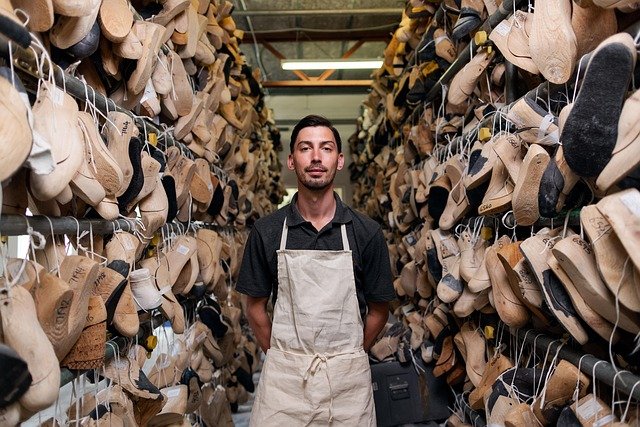Handcrafted vs machine-made: identifying construction quality cues
Deciding between handcrafted and machine-made wristwear starts with understanding how construction affects fit, longevity, and appearance. This article outlines practical cues — from materials and measurements to closures and repairability — to help you judge quality without relying on labels alone. Learn how sizing, comfort, and maintenance needs differ so you can choose pieces that fit your priorities.

How does materials affect construction quality?
Materials are the foundation of both handcrafted and machine-made wristwear. Handcrafted pieces often use solid metals, hand-selected gemstones, or vegetable-tanned leathers with visible joins and tool marks that can indicate artisanal work. Machine-made items may feature stamped metals, plated finishes, or synthetic components manufactured for consistency. Assess the feel: denser metals and well-finished edges often signal better durability, while consistent, tight links and flush settings reduce snagging and wear. Materials also influence traceability and sustainability; ask how metals were sourced or whether recycled content was used when those attributes matter to you.
What to look for in sizing and measurements?
Accurate measurements and thoughtful sizing determine comfort and long-term wearability. Handcrafted pieces can be customized to exact measurements, accommodating wrist contours and preferred fit (snug or loose). Machine-made lines usually rely on standardized sizing and may offer adjustment links or a range of preset sizes. Check measurements in millimeters for band width and length, and confirm whether the manufacturer provides guidance for measuring wrist circumference. Well-made bracelets will account for clasp thickness and any added length when closed, so try pieces on or verify measurements before purchasing.
How do closures and clasps indicate durability?
Closures and clasps are practical quality cues. High-quality clasps—box clasps, lobster clasps with solid springs, or screw closures—tend to last longer and secure better than cheap springs or snap fittings. In handcrafted items you may find custom-made clasps that integrate with design but still prioritize function; inspect moving parts for tight tolerances and smooth action. Machine-made wristwear often uses mass-produced clasps that are consistent but can fail if made from thin metals or inferior springs. Look for reinforced attachment points and neatly soldered or riveted links near closures, as these areas concentrate stress.
How to assess comfort and wearability?
Comfort depends on construction details as much as materials. Handcrafted pieces that consider ergonomics will have rounded edges, smooth inner surfaces, and link movement that follows the wrist. Machine-made pieces can be comfortable too, but mass production may sacrifice subtle finishing that prevents pinching or rubbing. Consider how the bracelet sits during motion: does it rotate, catch on fabric, or press into the skin? Padding under heavy elements, tapered edges, and appropriate weight distribution all improve comfort. Try stacking a sample with other wristwear to simulate everyday use.
What to know about care, maintenance, and repair?
Quality is partly measured by how easily a piece can be cared for and repaired. Handcrafted bracelets are often designed with repairability in mind: solid links can be re-soldered, clasps replaced by a local jeweler, and leather straps resurfaced. Machine-made items with glued components or sealed electronics can be harder to maintain. Regular care and maintenance extend life—clean metals gently, condition leather periodically, and store items to avoid abrasion. When evaluating a purchase, ask about local services for repair and whether spare parts or replacement clasps are available in your area.
How to evaluate sustainability, traceability, and upcycling?
Sustainability and traceability are growing quality indicators. Handcrafted makers may provide provenance for materials and transparent sourcing, while larger machine-made brands may publish supply-chain audits or certifications. Upcycling and repairability improve a piece’s lifecycle: look for bracelets made from recycled metals, reclaimed beads, or designs that facilitate component replacement. Traceability can be communicated through material documentation or small-batch production notes. Consider how a bracelet fits into your styling and stacking plans over time—versatile designs that combine well with existing pieces reduce the urge to discard and replace.
A practical way to compare is to inspect the visible joins, check for hallmarks or maker’s stamps, and test moving parts. Handcrafted items often show subtle evidence of hand-finishing that can be reassuring; machine-made pieces offer consistent sizing and finishes that suit those prioritizing predictability. Whether you favor artisanal character or manufactured uniformity, prioritize materials, measurements, closures, and repair options to judge construction quality.
In summary, identify construction quality cues by examining materials, taking accurate measurements, testing closures and clasps, assessing comfort, and understanding care and repair pathways. Consider sustainability and traceability if long-term impact matters to you. These practical checks will help you choose wristwear that meets your expectations for durability, comfort, and styling when stacking or wearing alone.






